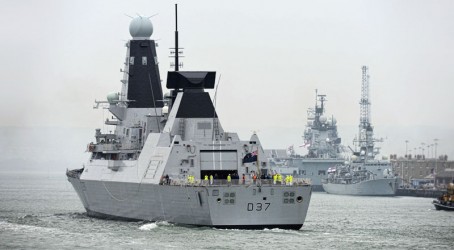Editor's Pick
The sixth and final Type 45 destroyer, Duncan, has been officially handed over to the Royal Navy at Portsmouth where the vessel will commence sea trials.
The ship's arrival at the naval base marks the end of a successful 12 year build programme to provide the Royal Navy with a fleet of the largest and most powerful air defence destroyers it has ever received.
The Type 45 Destroyers are capable of carrying out a wide range of operations, including anti-piracy and anti-smuggling activities, disaster relief work and surveillance operations, as well as high intensity war fighting.
Each Destroyer can engage a large number of targets simultaneously to defend aircraft carriers or groups of ships, such as an amphibious landing force, against the strongest future threats from the air. The vessels will contribute a specialist air warfare capability to worldwide maritime and joint operations.
Made using 2,800 tonnes of steel, the Type 45 ships are longer than 16 double decker buses and weigh more than the Blackpool Tower.
With fuel tanks half the size of an Olympic swimming pool, the ships are capable of supplying enough electricity to power a town of 80,000 people.
The Destroyers are expected to provide the "backbone" of the UK’s naval air defences for the next 30 years and beyond.

Duncan is the seventh vessel in the Royal Navy’s history to be named after the 18th Century naval commander Admiral Lord Adam Duncan who is famed for his victories at sea.
The first Type 45, HMS Daring, arrived in Portsmouth in January 2009. The ship been followed by HMS Dauntless, Diamond, Dragon, Defender and now Duncan. They will all be based in Portsmouth.
HMS Daring was commissioned into the Royal Navy yesterday.